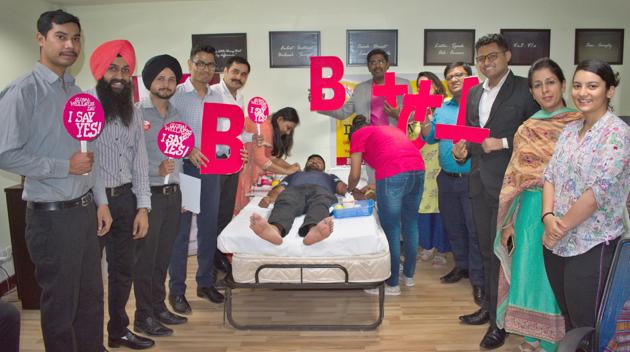Use social media as a tool to improve blood donation
But recruitment of safe donors is a challenging task. We need more people to come forth, to realise that blood donation is their responsibility. Facebook, for example, can also be used to sign up as a donor, and connect with organisations in need
Technology is one of the strongest binding forces in our society today. We have come a long way, having harnessed information and innovation to build networks which are getting stronger by the day. It is critical for people to understand that beyond the lifestyle aspect of social media, lies its inherent power to link people across countries, time zones, and also economic and social disparities. Social media platforms are driving important conversations which are being heard across the world.

In our everyday use of social media, we have seen people in need seeking information on blood donation, looking for donors matching blood types of patients in urgent need. We know that the need for blood can come up anywhere, at any time. It could be an accident, a natural disaster, a complex surgery, or a childbirth. It could be conditions like severe anaemia or haemophilia. Social media platforms can become life-saving tools at such times.
Unlike medicines, blood cannot be manufactured, neither can it be stored for too long. In fact, different components of blood can be stored by banks for different time periods. While red cells can be stored in optimum conditions for up to 42 days, platelets up to five days, and plasma and cryo up to one year. This makes it critical that we ensure a reliable supply of blood and blood products by making it easy for people to make voluntary, unpaid donations.
This is because voluntary donations usually ensure that the blood is of good quality of blood. This is not always the case with professional donors. Voluntary blood donation programmes form the foundation of safe and quality Blood Transfusion Services (BTS). The safest blood donors are non-remunerated blood donors from low-risk populations. For a safe blood service in our country, where comprehensive laboratory tests of donated blood are neither possible, nor pragmatic, it is best to switch to 100% voluntary donations. This is why it is critical that we are able to reach all voluntary blood donors, wherever they may be.
But recruitment of safe donors is a challenging task. We need more people to come forth, to realise that blood donation is their responsibility. Blood banks and hospitals cannot sustain health care without adequate blood from such donors, and blood donor organisations play a very crucial role in this endeavour. It is in such situations, the power of innovation and technology, of internet and connectivity truly plays an instrumental role. It has the potential to deliver life-saving services across populations.
Facebook today can also be used to sign up as a donor, and connect with organisations in need. Facebook’s feature works hand-in-hand with community blood banks and national health systems to drive a sustained supply of blood. Delhi State Blood Transfusion Council and Karnataka SAPS have already directed their blood banks to use this tool to ensure increased voluntary blood donations.
This World Blood Donor Day was on June 14. Let us come together to urge more people to use these tools in hand, to spread the word that signing up as a life-giver is just a click away. With the power of technology and the binding forces of social media, we should aim to respond to every plea for life with empathy and solidarity. No one should be left behind.
Shobhini Rajan is assistant director general, Blood Transfusion Service, and director, National Blood Transfusion Council
The views expressed are personal






